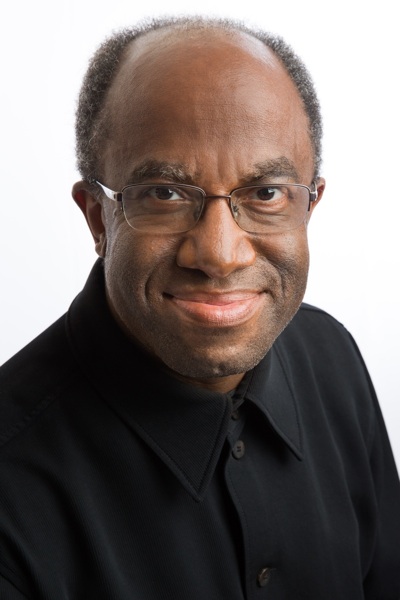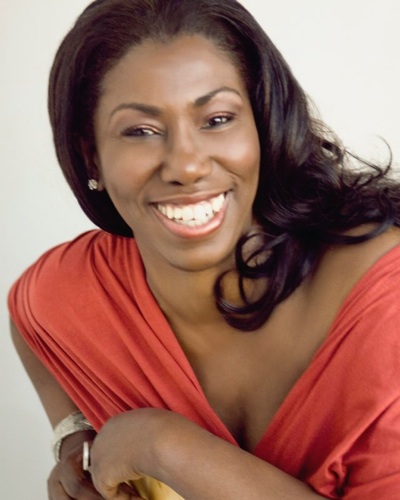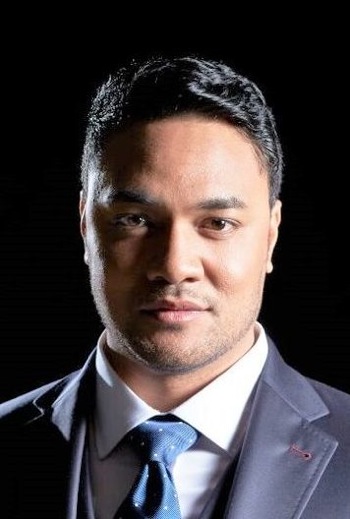Michael Morgan hits a home run
Last Friday, March 31, the deep stage of Oakland’s Paramount Theater was filled with the Oakland Symphony, the Oakland Symphony Chorus, and St. Mary’s College Chamber Singers and Glee Club. They had partnered to bring out the depth and power of Anton Bruckner’s Te Deum. Programmed to balance that heartfelt prayer was a work of big bones and simple themes, and an audience favorite (and it was actually the result of an audience poll from 2016), Dvorak’s New World Symphony.
To enthusiastic applause, conductor Michael Morgan took the microphone and addressed us.
“You may have seen the poster for this concert with a big ship voyaging to the New World. How ever your family got here – if they came with papers or if they came without papers or if they came involuntarily – we welcome them to the Oakland Symphony!” Oakland’s multicultural audience thundered their applause.
 I well remember eight years ago when the Oakland Symphony held a concert on the Friday immediately after Obama’s inauguration. Opening that concert, Morgan led the orchestra in the Star Spangled Banner, and three thousand people stood up in reverence, and in awe that we had lived to see a day when an African-American person could become the President of the United States.
I well remember eight years ago when the Oakland Symphony held a concert on the Friday immediately after Obama’s inauguration. Opening that concert, Morgan led the orchestra in the Star Spangled Banner, and three thousand people stood up in reverence, and in awe that we had lived to see a day when an African-American person could become the President of the United States.
Today, after years of festering and stridency in government, the wheel has turned and a reality TV star is steering our ship. Morgan’s gesture of welcome was a breath of sanity in a country turned topsy-turvy.
The concert opened with Concertino Cusqueño, a 2012 work from Berkeley-born composer Gabriela Lena Frank, who was in the audience for its West Coast premiere. Based on a Peruvian religious melody and a striking timpani motif from British composer Benjamin Britten, this was a work that found strength in the melding of cultures, and then created its textures on a canvas stretching from ethereal and private to dance-like and brassy. Piccolo and bass clarinet joined on their notes for breathy tops and earthy deeps, recreating the feeling of panpipes, while timpani gave their melodies pacing and majesty. At times the violins were in unison, a mono-crop of strings, but then the principals took a turn with the fragile agility of a quartet. Concertmaster Dawn Harms had several lovely passages where her violin soared against the rumble of bass clarinet and tinkling of harp. And violist Tiantian Lan joined cellist Daniel Reiter for razor sharp strokes and soft lilt.
That string quartet rising out of the larger orchestra was a lesson in intimacy, and when the rest of the orchestra came in, they felt twice as large.
 And before the Audience Favorite (in which they clapped between every movement of the Dvorak), the Paramount was filled with a prayer that was both profound and electric. The first entrance had the Oakland Symphony unfurling its might in the Art Deco hall, and the combined choruses followed, tight and beefy. On their heels soprano Hope Briggs began the “Te Deum” and demonstrated why she is one of the great voices of our age and a local treasure. Her aria was in a punishingly high tessitura but still full of chocolate and velvet, a sound that propelled the action with hair-raising immediacy.
And before the Audience Favorite (in which they clapped between every movement of the Dvorak), the Paramount was filled with a prayer that was both profound and electric. The first entrance had the Oakland Symphony unfurling its might in the Art Deco hall, and the combined choruses followed, tight and beefy. On their heels soprano Hope Briggs began the “Te Deum” and demonstrated why she is one of the great voices of our age and a local treasure. Her aria was in a punishingly high tessitura but still full of chocolate and velvet, a sound that propelled the action with hair-raising immediacy.
Tenor Amitai Pati was no slouch in his first duet with Briggs, and stunning in his own solo, Te ergo quaesumus, which felt like a veritable baring of the soul. We will be hearing him often, if we are lucky. And the chorus! I have never heard such full and exceptionally clean sonorities or dynamic breadth from that stage: it appears that the two college choirs and the older choristers inspired each other into one tight focus, and that was most apparent in their dreamy softer moments.
 After intermission we finally got to appreciate a Bohemian’s control of evocative themes and sturdy gravitas. Dvorak wrote his New World Symphony in 1893 during a two-year trip to the US, where he was the director of the National Conservatory of Music in New York City. The orchestra was rock solid, creating tension in each moment and carrying us through the big arching themes.
After intermission we finally got to appreciate a Bohemian’s control of evocative themes and sturdy gravitas. Dvorak wrote his New World Symphony in 1893 during a two-year trip to the US, where he was the director of the National Conservatory of Music in New York City. The orchestra was rock solid, creating tension in each moment and carrying us through the big arching themes.
Morgan took the second movement at a lavishly slow pace, with Denis Harper performing long English horn solos without a hint of breaking. And, yes. The audience clapped long at the end of every movement, and while some in the audience may have frowned at the lapse of etiquette, an Oakland Symphony cellist told me that Morgan was half-expecting it and delighted.
The Oakland Symphony finishes this season with a bang. On Friday, May 19, they will host a concert version of Frank Loesser’s Guys and Dolls. I’m getting out my spats and lucky dice.
—Adam Broner
Photo, top: conductor Michael Morgan, photo by Marco Sanchez; below, soprano Hope Briggs and tenor Amitai Pati, photos courtesy of the artists.
